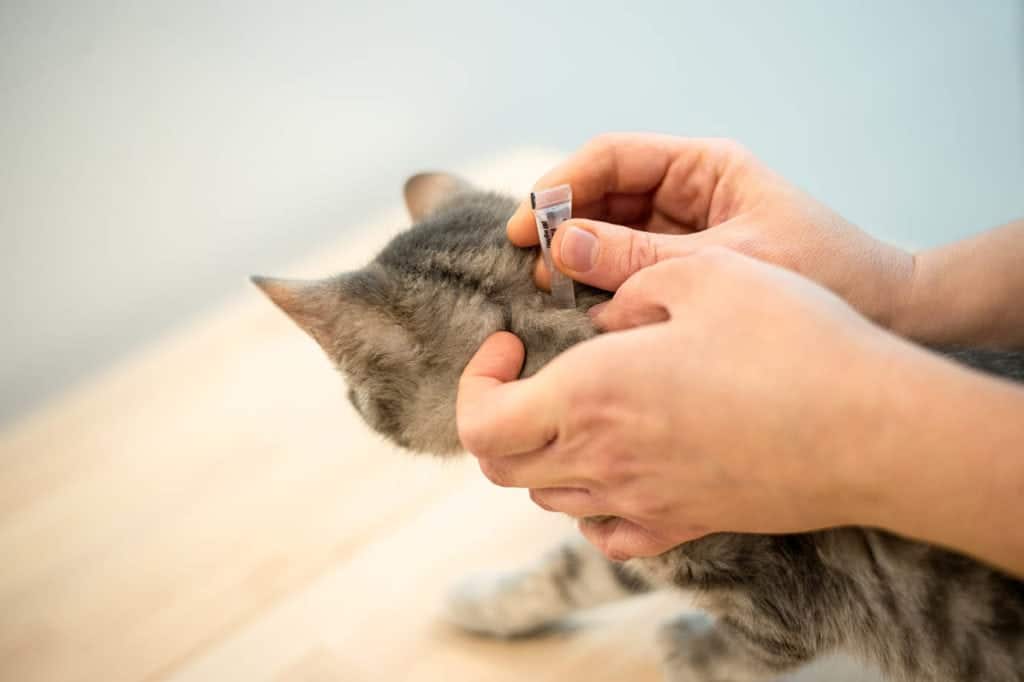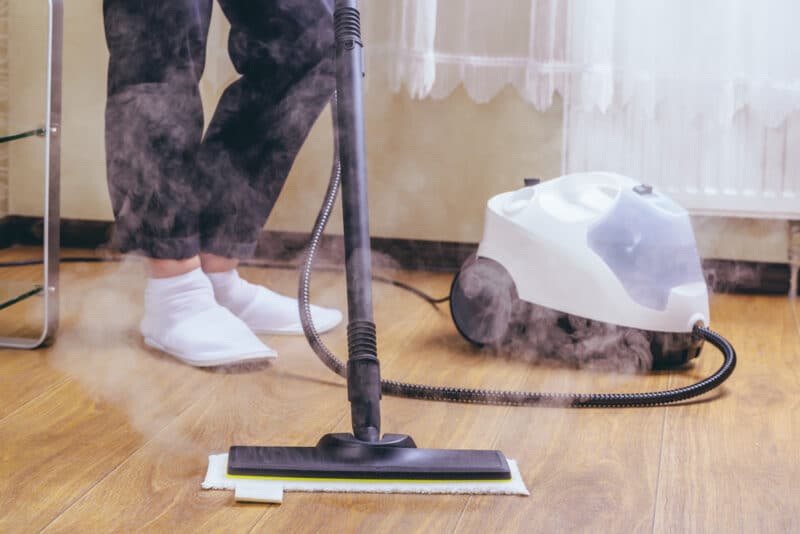If your cat has fleas and they’ve also infested your home, we feel your pain. If you’re contemplating reaching for the phone to call in a steam cleaner, it’s important to note that using a steam cleaner will indeed kill many of the fleas in your home. However, you should never use a steam cleaner on your cat! Also, while the steam cleaner is a valuable tool, some fleas will remain.
In this post, we’ll examine the tools and techniques you can use with a steam cleaner to rid your home of these pests.
Will a Steam Cleaner Kill Fleas?
A steam cleaner is an excellent tool for killing fleas hiding in your carpets and upholstery. They can’t withstand the heat, and although steam cleaning is a big help in the fight against fleas, it alone can’t stop the infestation.
The life cycle of a flea has four stages: egg, larvae, pupae, and adult. Tackling a flea infestation isn’t just about killing the adult fleas but also the eggs, larvae, and pupae hiding around your home, which can take a while to eliminate thoroughly.
Steam cleaning can kill some eggs but not all, especially since some are still on and falling off the cat, and more are likely hiding in various crevices. They can still hatch after the steam cleaning.
Moreover, the heat from the steam can encourage leftover eggs to hatch within a few days, but fortunately, you can vacuum them up. In short, eliminating fleas completely from your home is a process that takes several weeks (or more, in some cases) of consistent cleaning combined with the proper treatment for your cat.

How to Get Rid of Fleas in Your Home
Instead of using a single method to eliminate fleas from your home, it’s best to go with a combination approach of the following, as recommended by the Environmental Protection Agency:
1. Treating Your Cat
You can’t eliminate the infestation without treating your cat and all other animals in your home. There are several treatment methods, including topical treatments, oral treatments, flea shampoos, cat-safe flea sprays, and combing regularly with a flea comb, especially on the neck and tail, before placing the fleas in hot, soapy water. Do not, under any circumstances, use a steam cleaner on your cat.
We recommend calling your vet immediately after discovering the flea infestation to get advice on the best treatment for your cat. Then, you can maintain regular flea and tick treatments to prevent it from happening again.
2. Washing
Thoroughly washing all bedding in your home, using detergent and hot water, is one of the most critical steps in the elimination process. After washing, set it to dry at the highest setting. Don’t forget to wash your pet’s bedding and your own regularly. In severe cases, you may have to throw away the old bedding.

3. Daily Vacuuming
A reliable vacuum cleaner is one of the most powerful allies in this battle and should be used daily on your carpets, upholstery, sideboards, and floors, and in as many crevices as you can get into. Doing this daily might be a pain until the infestation is gone, but it’s worth it.
4. Steam Cleaning
As mentioned above, steam cleaning is not something you should write off, even though it can’t kill all the fleas. Focus on your cat’s favorite spots where they spend a lot of time, as well as the upholstery and carpets.

Why Are Fleas Dangerous?
There are two reasons it’s so important to tackle flea infestations. First, it can be incredibly uncomfortable and distressing for your cat and even make them sick. Fleas can lead to tapeworms, bartonellosis (a bacterial infection that causes cat scratch disease), allergic dermatitis, and anemia.
The second is that it can spread diseases to you. Some rare diseases that fleas can cause in humans are typhus, cat scratch disease, and bubonic plague.
Final Thoughts
In short, steam cleaning can kill adult fleas and some flea eggs, but it can’t solve the problem of a flea infestation and must be accompanied by appropriate flea treatment for your cat, consistent vacuuming, and washing bedding regularly. If you’re having trouble eliminating fleas from your home, it might be worth contacting a professional exterminator.
The best way to prevent fleas is to keep up with a schedule of flea and tick preventatives for your cat. You can speak to your vet for more information about them.
Related Read:
- Does Chlorine Safely Kill Fleas on Cats? Vet Approved Guide & Advice
- Does Garlic Kill Fleas On Cats? Vet Approved Guide
Featured Image Credit: Dmytro Golovchenko, Shutterstock











